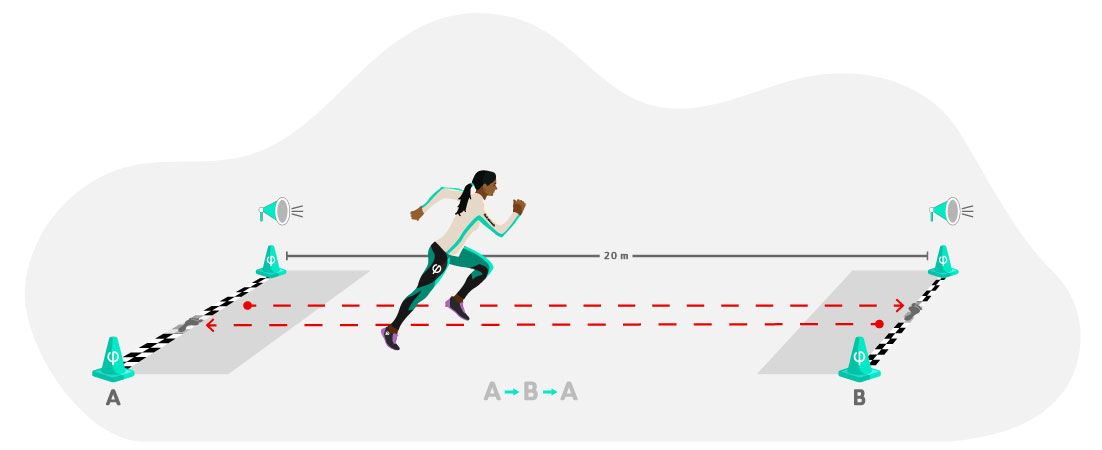
Multi-stage fitness test (Course Navette)
The MSFT (aka Course Navette) was created in 1988 by Dr. Luc Léger. It is a test used to determine the maximum aerobic power, as well as the Maximal Oxygen Uptake (The VO₂ Max). Sometimes this test is also called Pi test or Leger test in honor of its creator.
- Required Material: A flat non-slip surface, 4 cones to delimit the course of the circuit, a tape measure, a stopwatch and an audio equipment to play the recording of the test protocol. If the subjects’ heart rate (HR) must be measured, a heart rate monitor will be needed.
- Procedure: Participants must run the 20-meter (m) course continuously at the pace set by the audio protocol (beeps). At the first beep the subjects must run to the opposite line (located 20 m away), step on it and wait for the next beep to move again (that counts as 1 shuttle). Participants should try to follow the pace set by the protocol at all times, which will increase progressively. The test will end when the subject cannot step on the line at the moment the beep sounds, and the last shuttle reached will be recorded. The rhythmic period (also known as the stage) is 1 minute long. The test will be considered void if the participant fails to step on the lines correctly.
- Assessment: The number of stages that the subject is able to cover in a single attempt is measured.
- Remarks: The theoretical duration of the MSFT (Course Navette or Léger test) is 21 minutes, starting at a speed of 8 km/h and increasing progressively at a rate of about 0.5 km/h per minute. Each stage is specified by a speed and its equivalence in distance to be covered in 45 seconds (8km/h = 100 meters).
Take this test and 139 more in our App